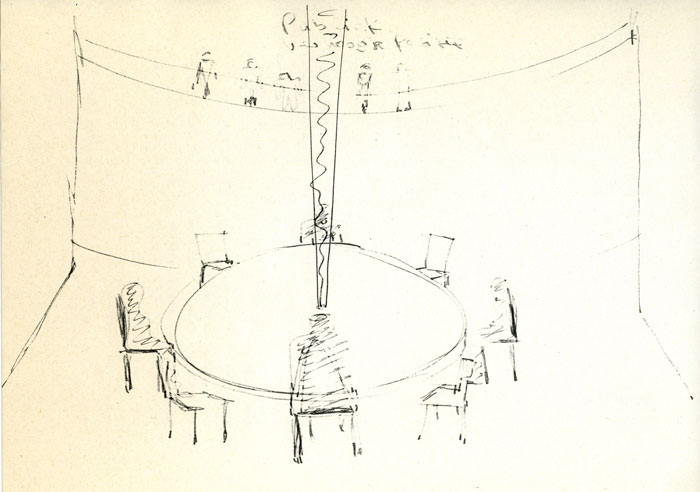
MARINA ABRAMOVIÇ and ULAY, Nightsea Crossing, 1982
each 29,7 x 21 cm
11 pp., vintage photo stats
Dutch language
application for municipality project in Sonesta Koepel, Amsterdam
condition: fine, although tanning at extremes
inv.MAbr 1130-pr
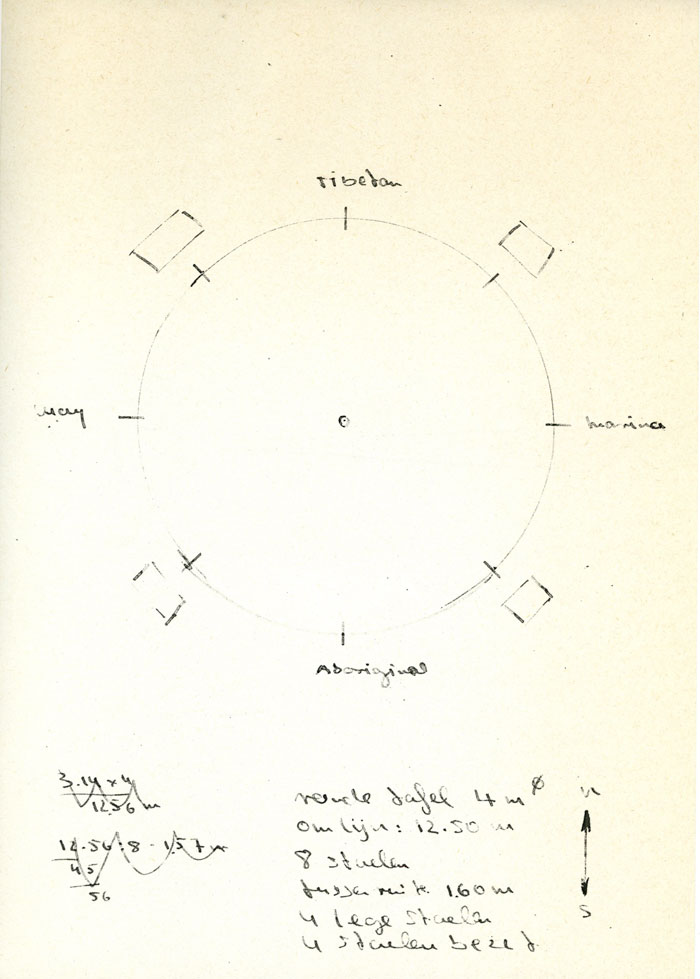
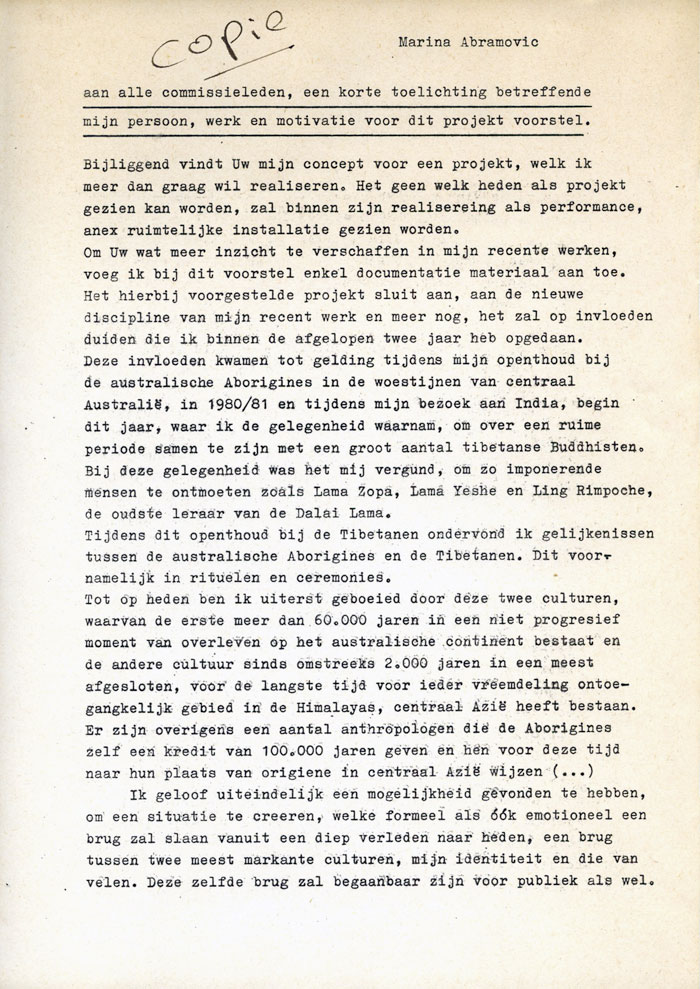
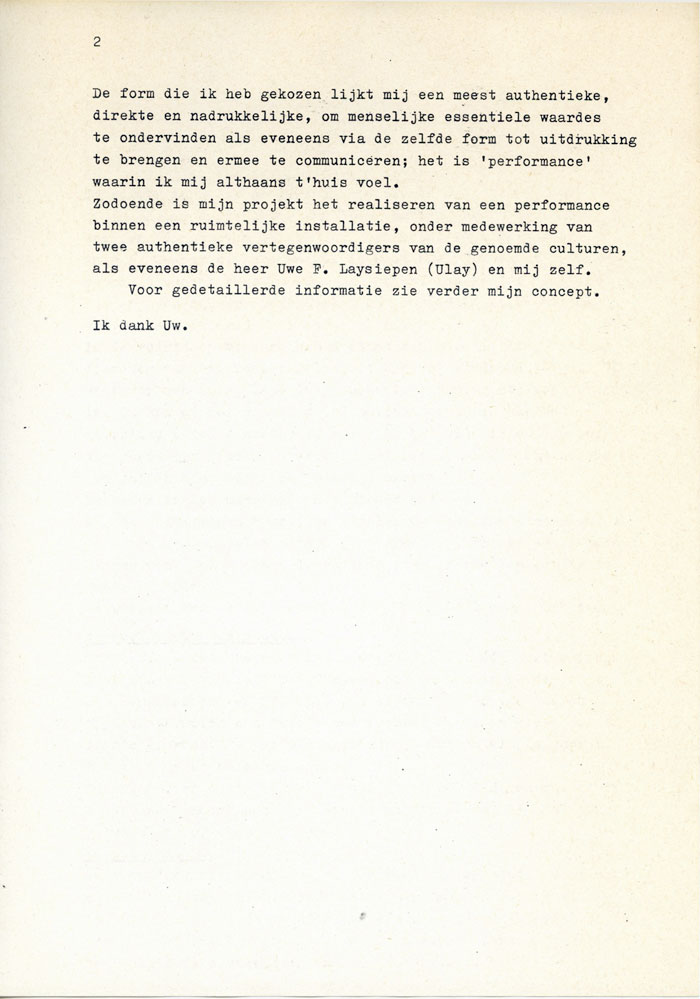
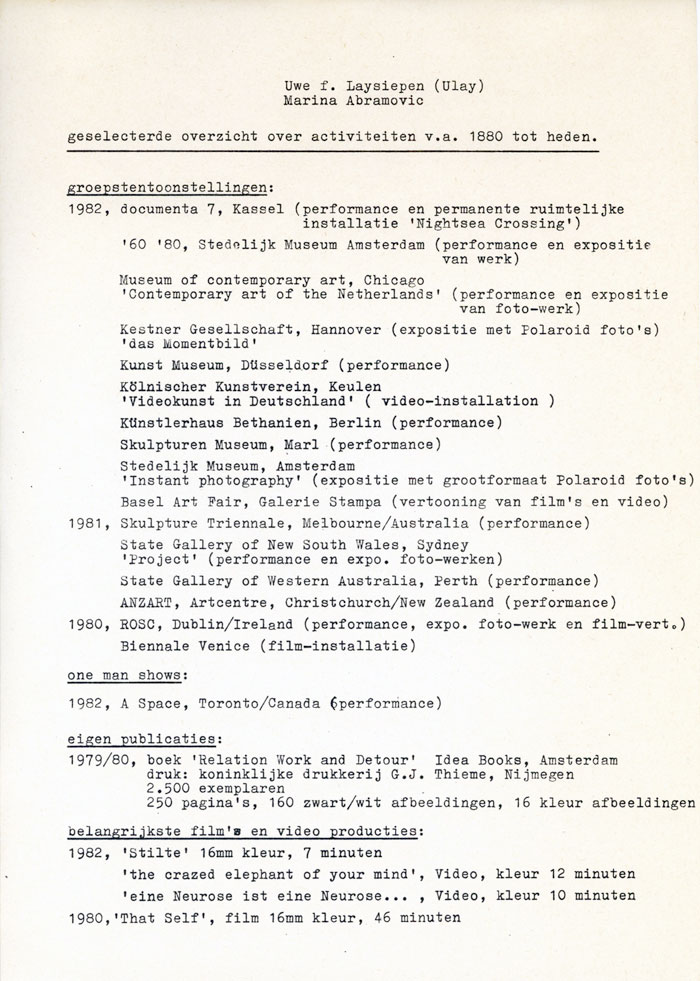


MARINA ABRAMOVIÇ and ULAY, Nightsea Crossing, 1982
each 29,7 x 21 cm
11 pp., vintage photo stats
Dutch language
application for municipality project in Sonesta Koepel, Amsterdam
condition: fine, although tanning at extremes
inv.MAbr 1130-pr




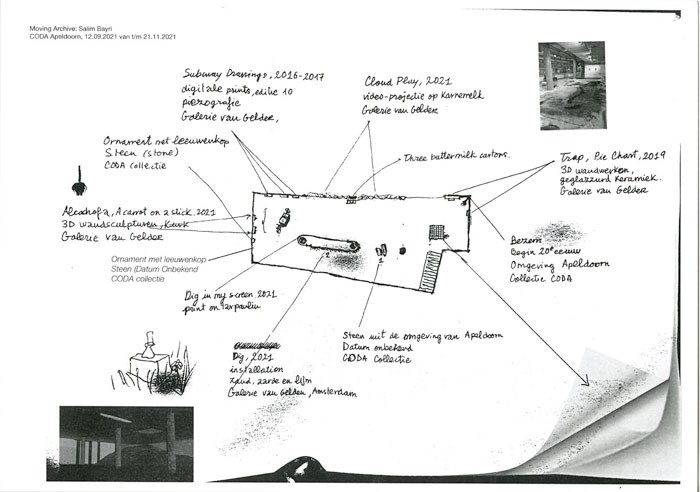
SALIM BAYRI, Moving Archive – text in museum hall, 2021
21 x 29,7 cm
digital print with drawings by Salim Bayri
issued in white, brown and fawn
published by Coda, Apeldoorn, Netherlands
inv.SBay 1126_1128
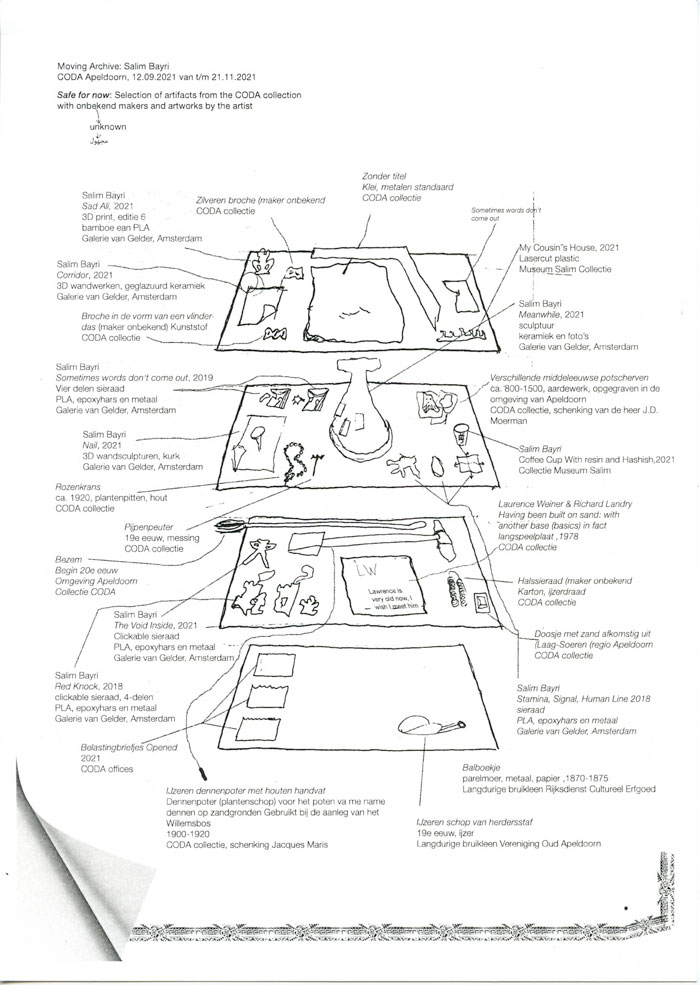
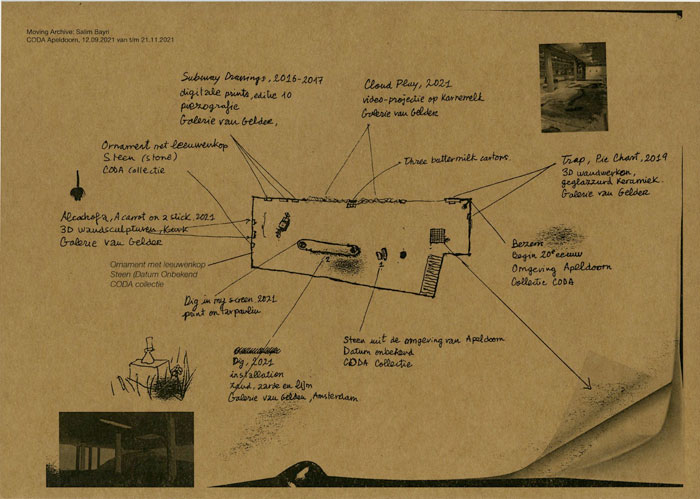
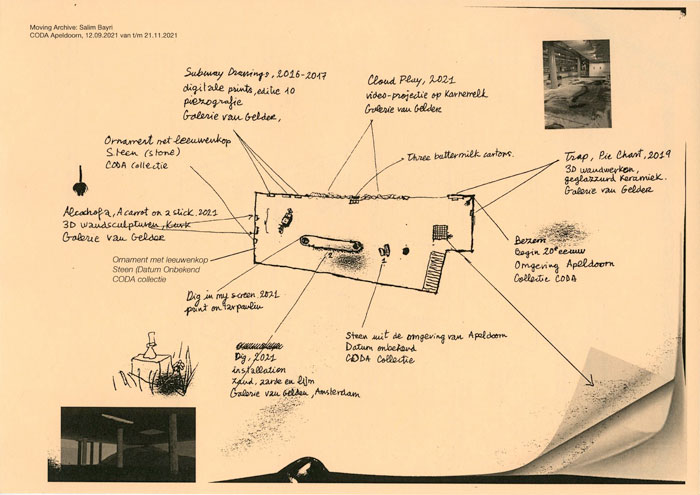
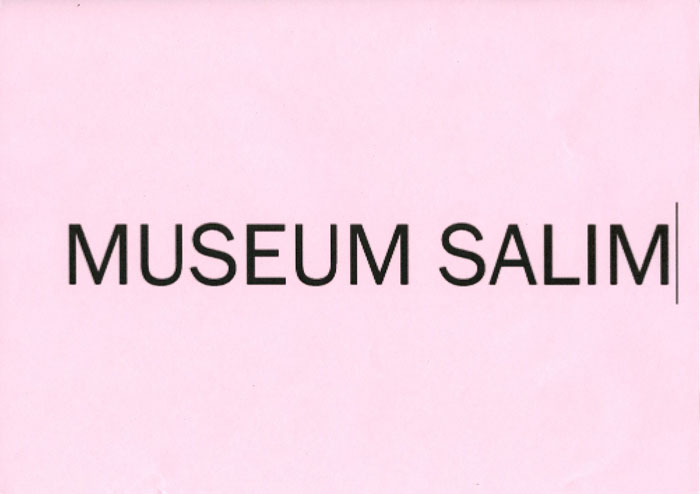
SALIM BAYRI, Museum Salim, 2021
21 x 29,7 cm
photo copy on pink paper
edition unknown; very few distributed in exhibition hall of Coda Museum
published by the artist on behalf of his solo exhibition at Coda Museum, Apeldoorn, Netherlands in 2021
inv.SBay 1129

HILMA AF KLINT, Secret pictures by Hilma Klint, 1988
26,7 x 21 cm
SC, 64 pp.
published by The Nordic Arts Centre, Helsinki, Helsingfors, Finland
uncommon in this condition; more than splendid
€ 340,- plus € 12,- Track & Trace EU registered mail
inv.HafK 1125


ROBERT RAUSCHENBERG, “Art meets Science and Spirituality”, 1990
29,7 x 21 cm
brochure; leporello, 8 pp.
published by Art meets Science and Spirituality in a Changing Economy Foundation, Amsterdam
rare
inv.LWij 1122-1123
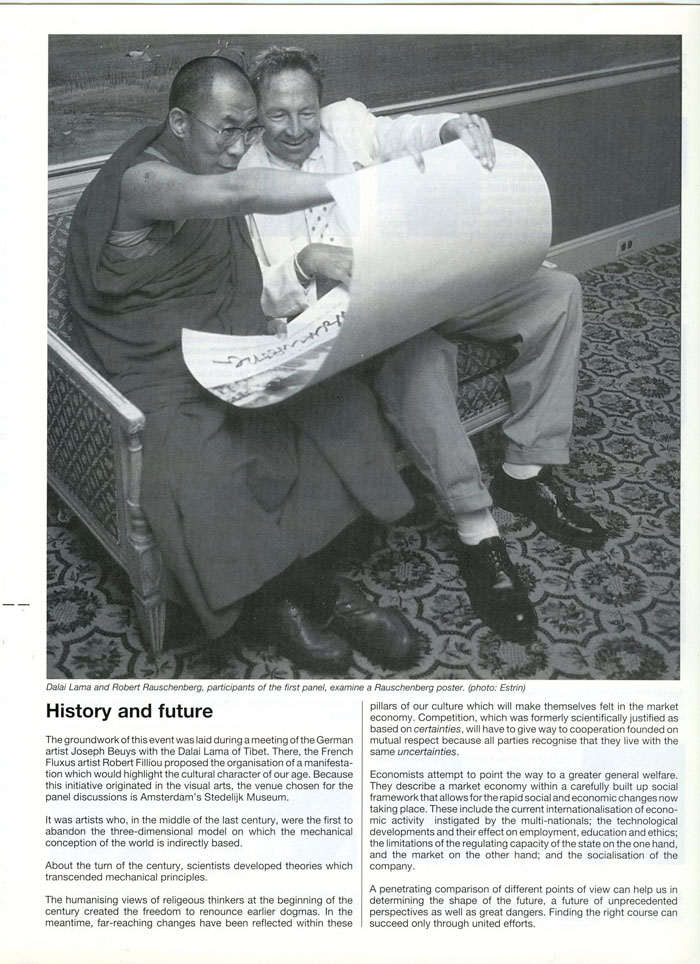
In 1990 from September 10 – 14, a symposium was initiated by Louwrien Wijers at the Stedelijk Museum Amsterdam. Scientists, philosophers and artists took part in this event. Apart from Robert Rauschenberg, also Marina Abramovic, John Cage, JCJ Vanderheyden and Lawrence Weiner participated.
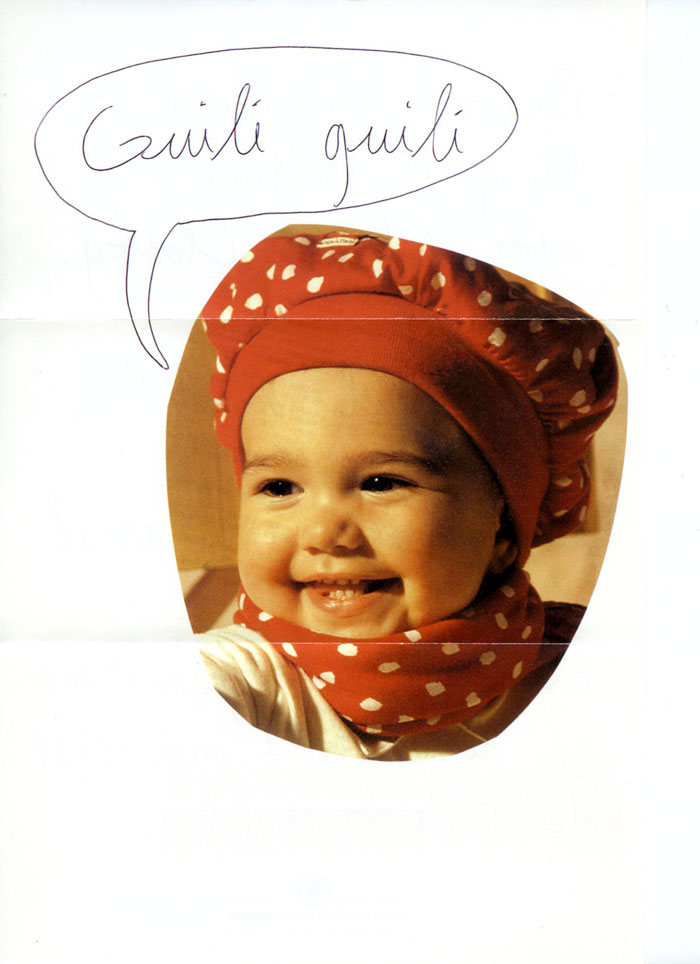
CLAUDE CLOSKY, invitation “Guili guili” – Brèves rencontres, 1997
29,9 x 20 cm
offset
folded as issued for mailing
published by Caisse des Dépôts, Paris, France
very rare
€ 140,- plus € 8,- Track & Trace EU registered mail
inv.CClos 1121
For a period of four days Claude Closky showed works at Caisse des Dépôts in Paris. The exhibition was sub-titled as Brèves rencontres; Short encounters.
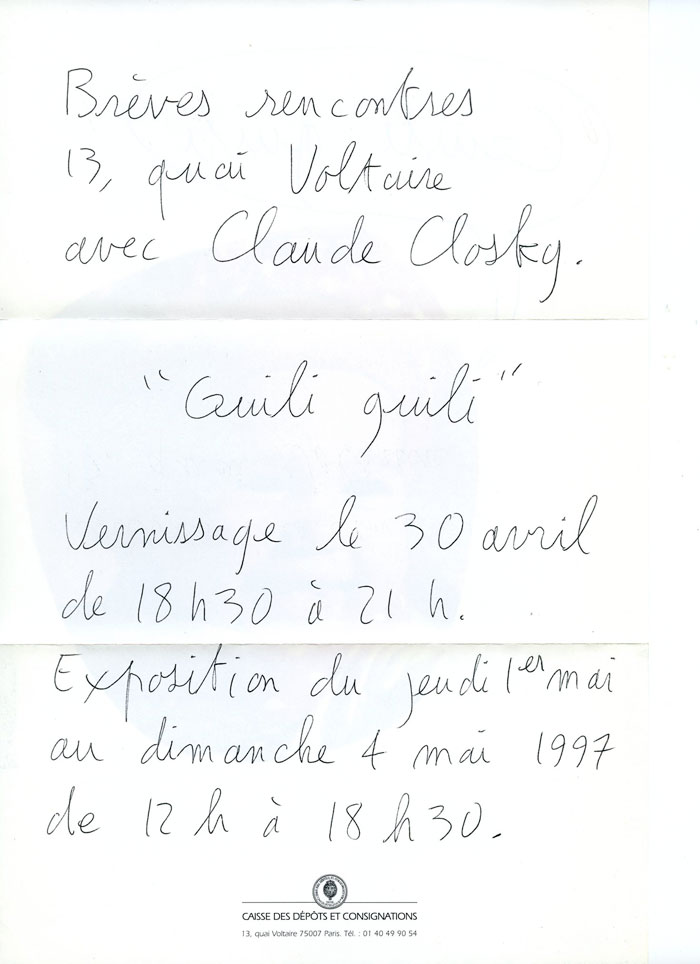
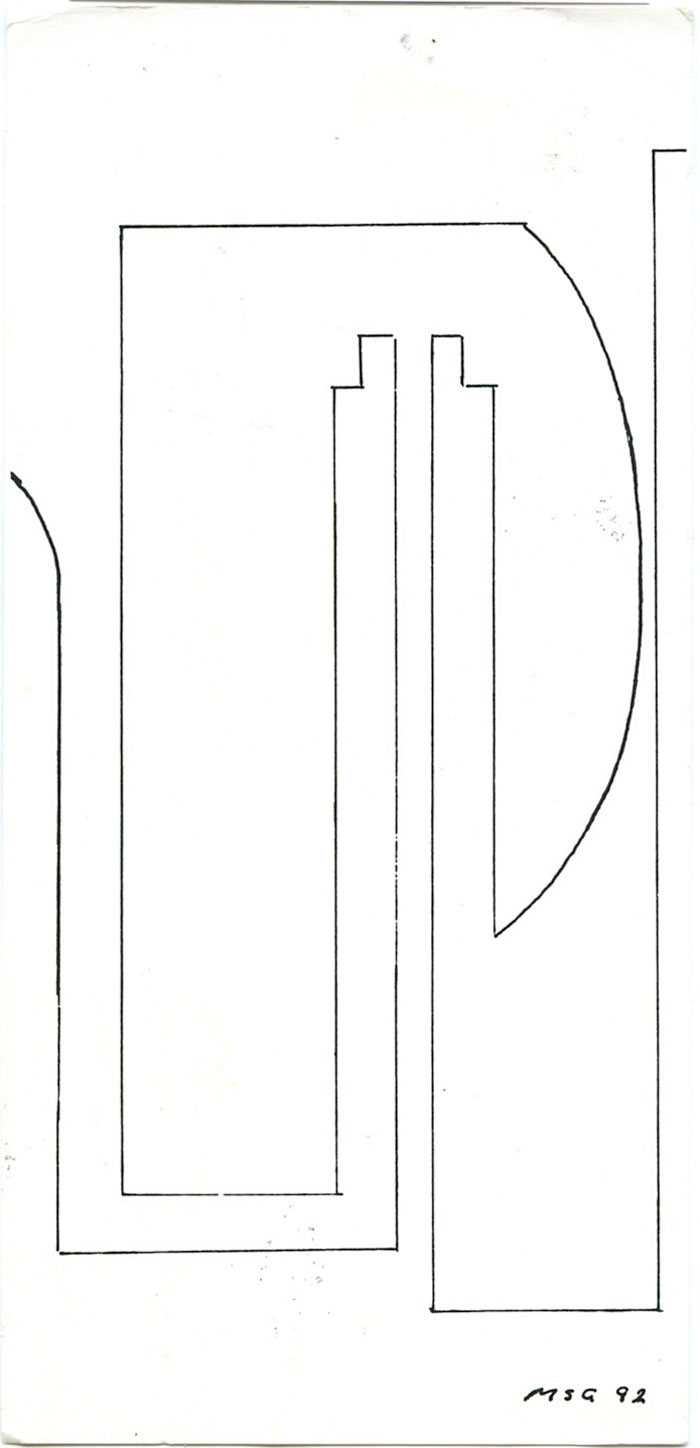
MAGNÚS S. GUDMUNDSSON, invitation card, 1992
21 x 10 cm
signed and dated in print
condition: good, although traces of postal handling
published by Galleri 11, Reykjavik, Iceland
€ 25,- plus € 15,- Track & Trace registered mail
inv.MSGud 1118
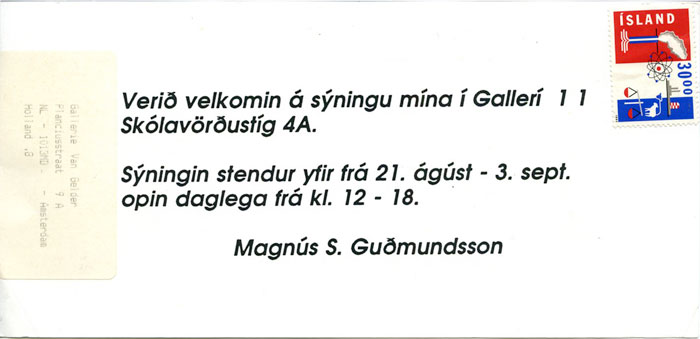
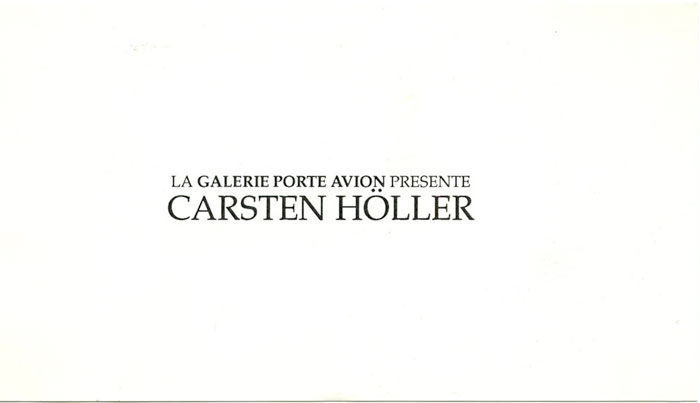
CARSTEN HÖLLER, Galerie Porte Avion, 1992
10 x 19 cm
invitation card
offset
condition: good
published by Galerie Porte Avion, Marseille, France
inv.CHoe 1117
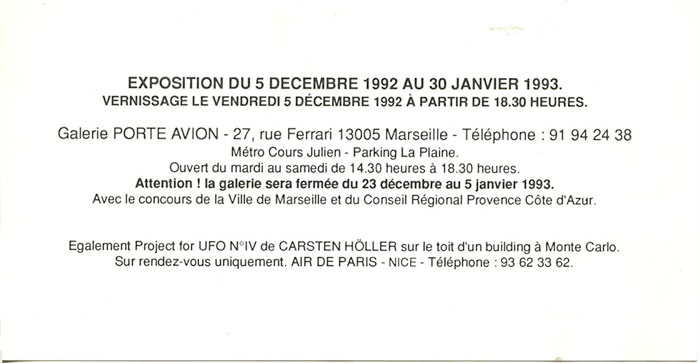
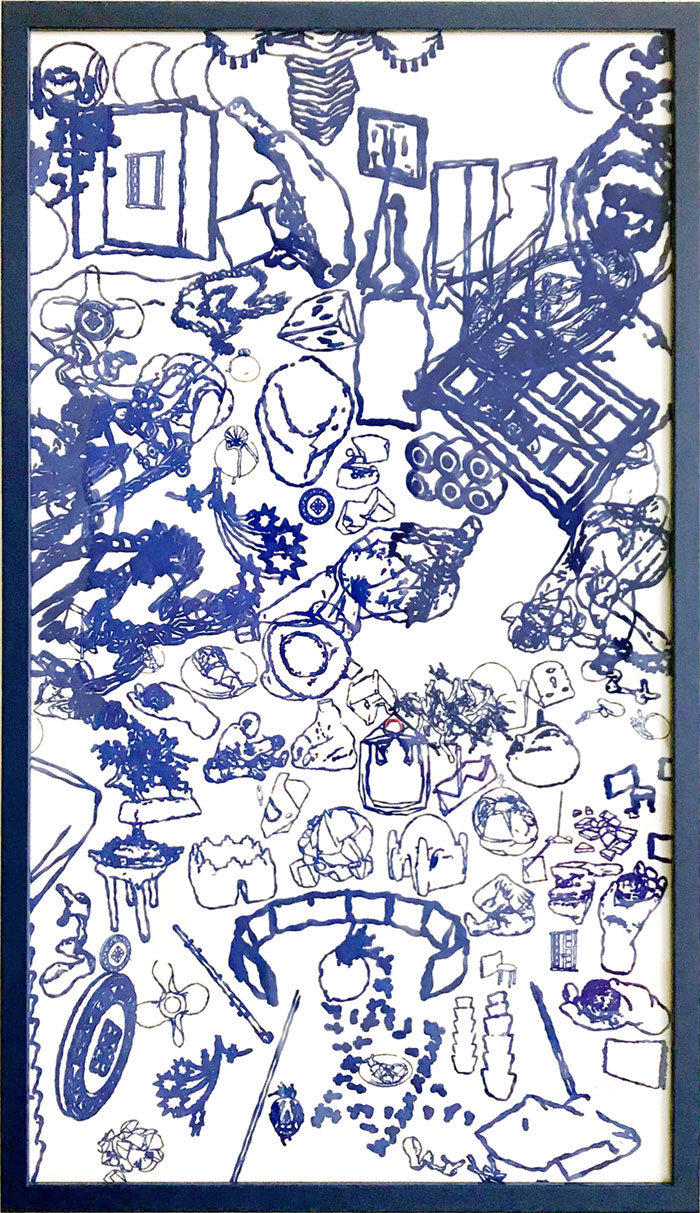
SALIM BAYRI, Let the blue in, 2018
64, 5 x 37 cm
screen print, blue frame + link to AR app for Android
signed, dated, numbered
edition 8
€ 500,- plus € 32,- Track & Trace EU registered mail
When an AR app belonging to this work is held in front of the framed screen print another image appears, though similar in atmosphere. Salim Bayri tells the following about this print:
LET THE BLUE IN (REJECTED), print on paper and AR app, 2018.
I applied to an open call by Spaces. (A company that offers coworking spaces around the world). They wanted to celebrate their 10th anniversary picking 10 existing works by 10 artists to make 10 editions of each that will go to 10 different coworking spaces. It was called ‘Power of 10’.
At that time, I visited the kitchen at ‘Ons Lieve Heer op Solder’ one of the remaining secret churches from the 17th century. I was intrigued by the blue tiles and started to wonder why they were blue.
Blue like the famous deep blue from Essaouira and Touareg garments. Could that be from there?
I made an image out of the figures found in the tiles, mostly about children’s games and made it look as if I really printed and framed it thanks to 3D computer simulations.
They liked it and I was asked to produce 10 copies of the image.
Every morning in my squat house in Van Schendelstraat in Groningen I would look at the image and change little details. I couldn’t leave it like it was after a night of sleep seeing little children playing the ball in my head.
By the time I sent the image to the printers, it was quite different, although I thought it was still in the same spirit.
The day they received it and hung it; I received a call from the organisers surprised by the modified image. “It’s not what we saw and It’s too late to reprint it, the opening is today!”
Urgently, I go see Kees van Gelder to seek some comfort. An hour before the opening we have the idea of using some tech magic with an AR app I made before. When the camera is pointed to the new rejected print, the first approved one shows up instead. I thought they would find it funny enough to accept the new image. But something approved apparently should stay like it is, and I had to reprint and replace everything as it was agreed in the first place.
But well, at least there’s a side of the story where the rejected and approved, old and new, altered and original are together. You have it.
SB
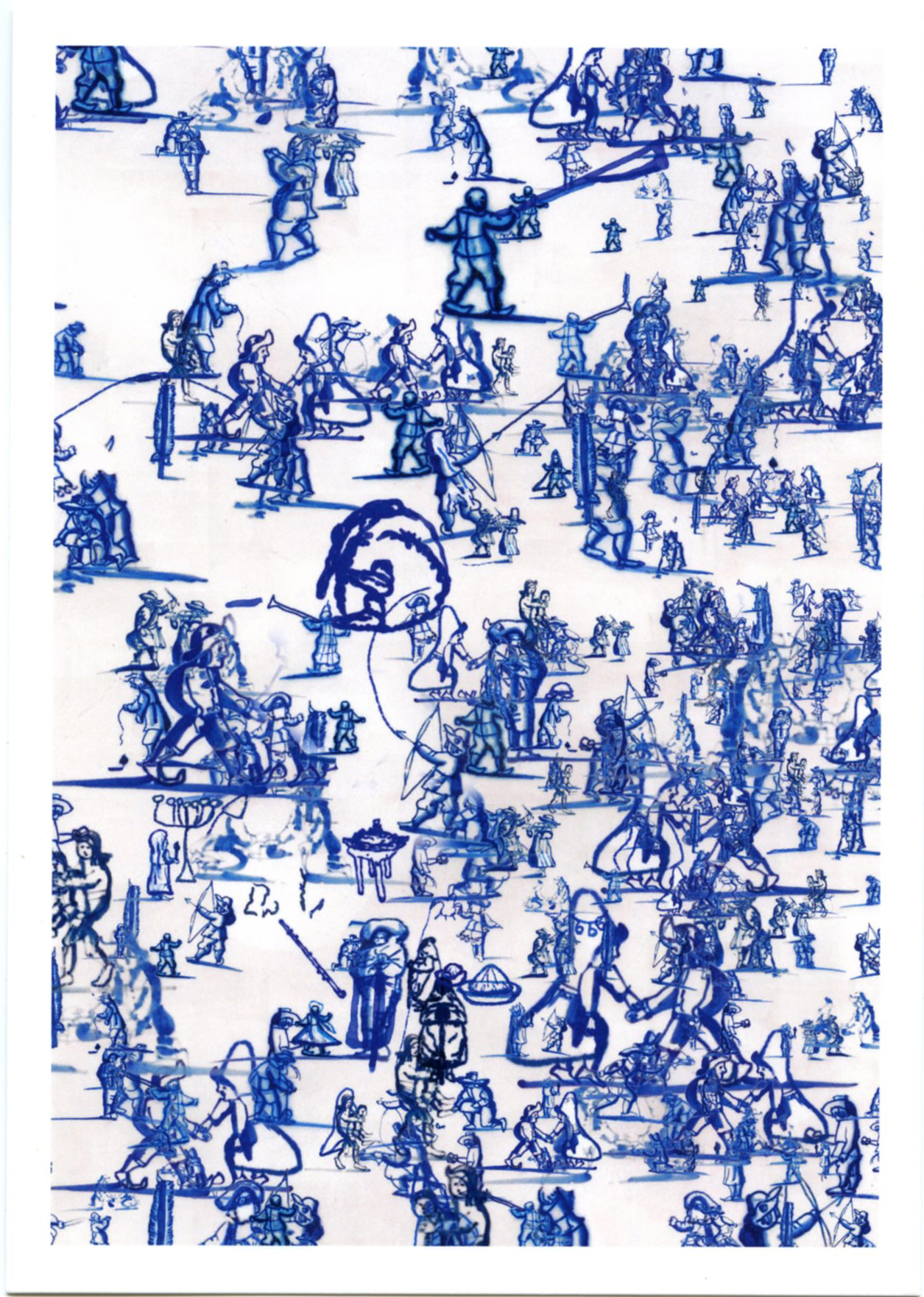
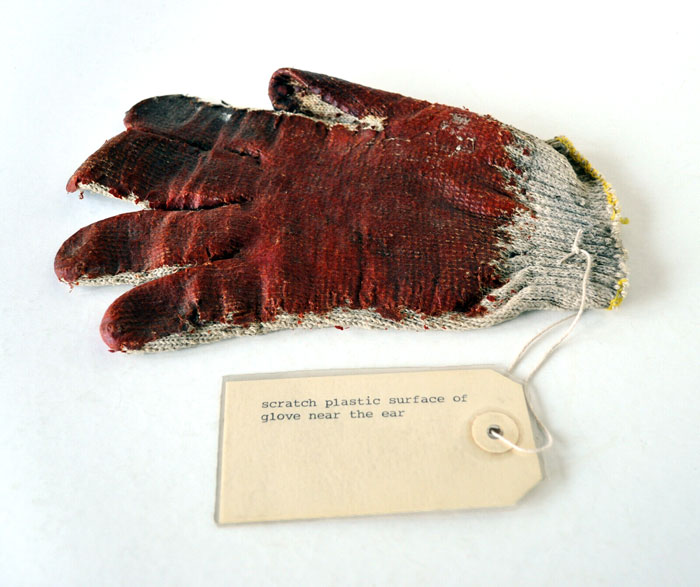
ALISON KNOWLES, Bread and Water, 1992
ca 20 x 14 x 2 cm
woolen glove, paint, ink stamped and PVC plasticised label, rope
machine types text
signed with initials, dated
inv.AKno 000-pr
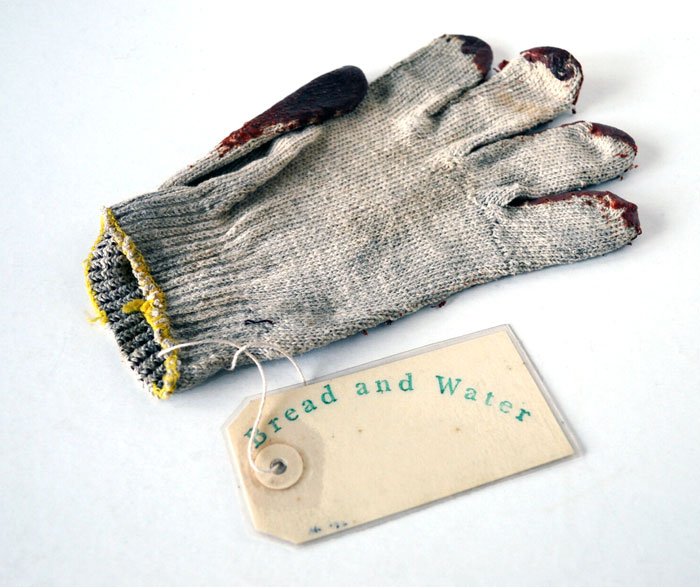
This apparently used glove has an industrial paint coating. The text on the attached label reads: Scratch plastic surface of glove to the ear. When this is done the hardened paint makes indeed some kind of a rustling noise. Although it is known that Alison Knowles noticed that the cracks in homemade bread had a resemblance to rivers, it is unknown to what the noise of this woolen glove may possibly refer to.
This item is part of found objects in the series “Bread and Water” by Alson Knowles, collected in 1992 on the occasion of the “Da Capo” Fluxus event in Wiesbaden on behalf of the 30th Fluxus anniversary. All objects have a tag and were probably part of a Moon Circle event.
Additional information:
‘Alison Knowles is neither a composer nor a performer in any traditional terms, yet much of her work is obviously some sort of music. When pressed to categorize herself, she told me she conceives most of her works simply as events. Yet even this catch-all term does not include her sculpture and prints, or her books and poems. But while she works in many media or intermedia, everything she does comes out of the same basic impulses: a concern for communication between human beings, an appreciation of the aesthetic qualities of ordinary objects, a deep respect for John Cage, and a profound understanding of what “communicating” is really about.’ Tom Johnson in Musical America, 1975.
Interview with Alison Knowles: https://www.fluxusheidelberg.org/interviewwithalisonknowles_v1.3.pdf
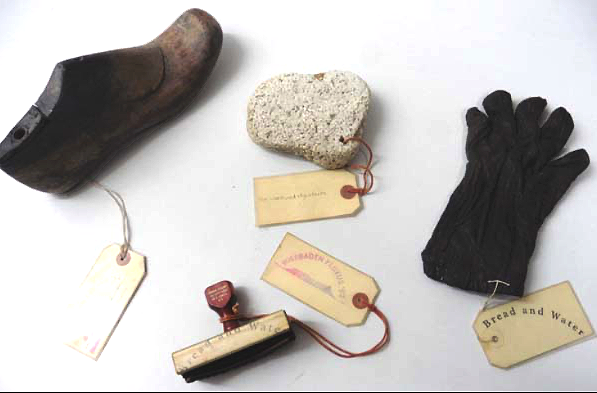
None of these 4 items with tags are signed.